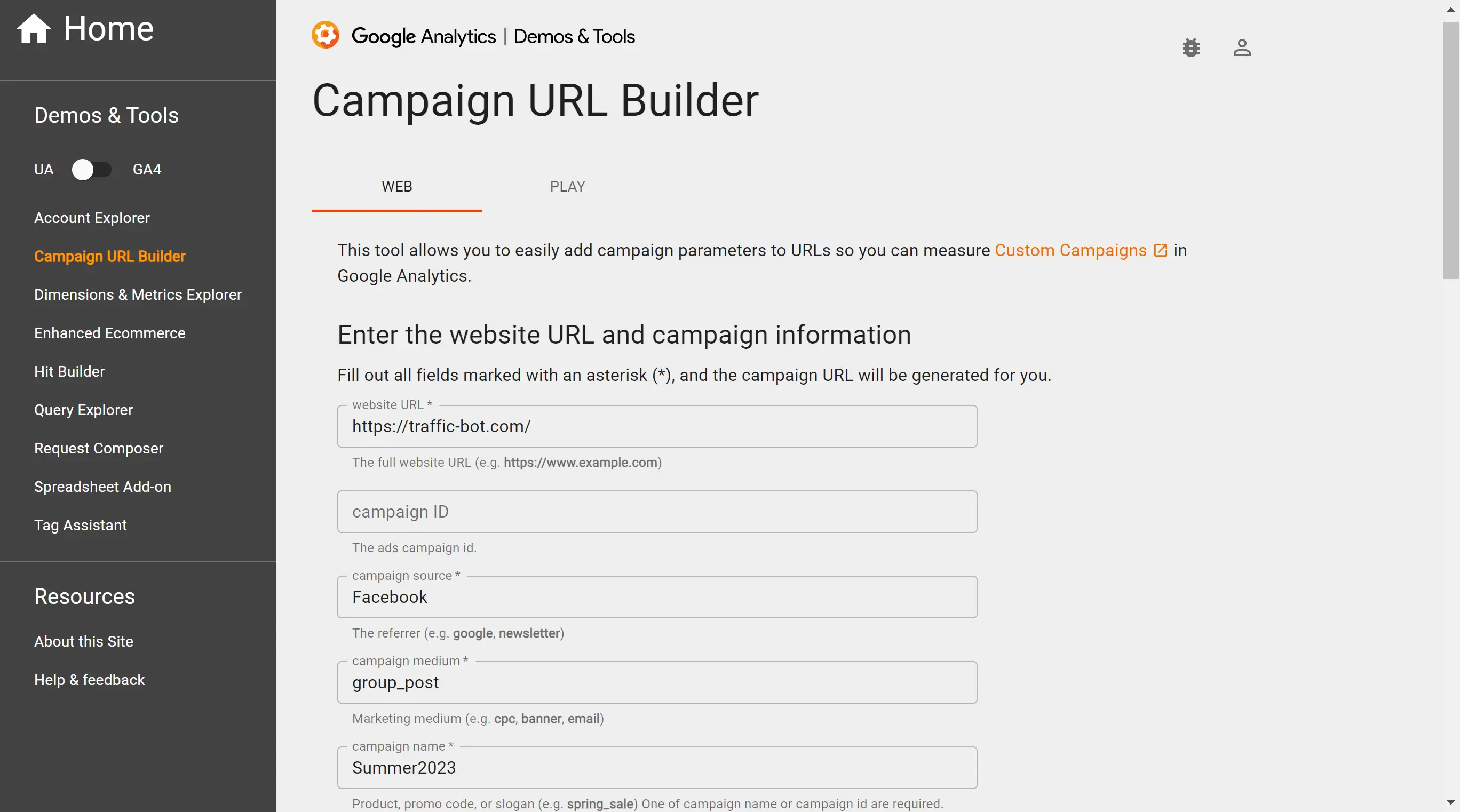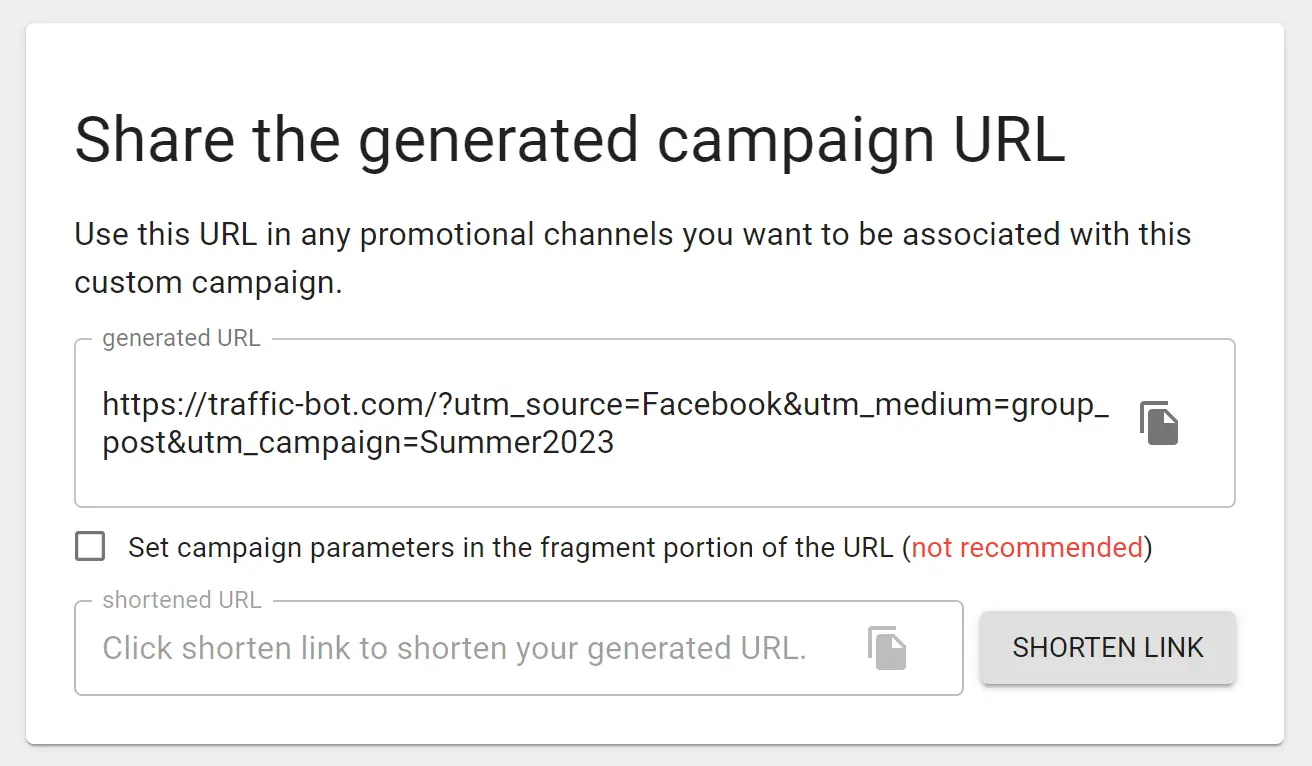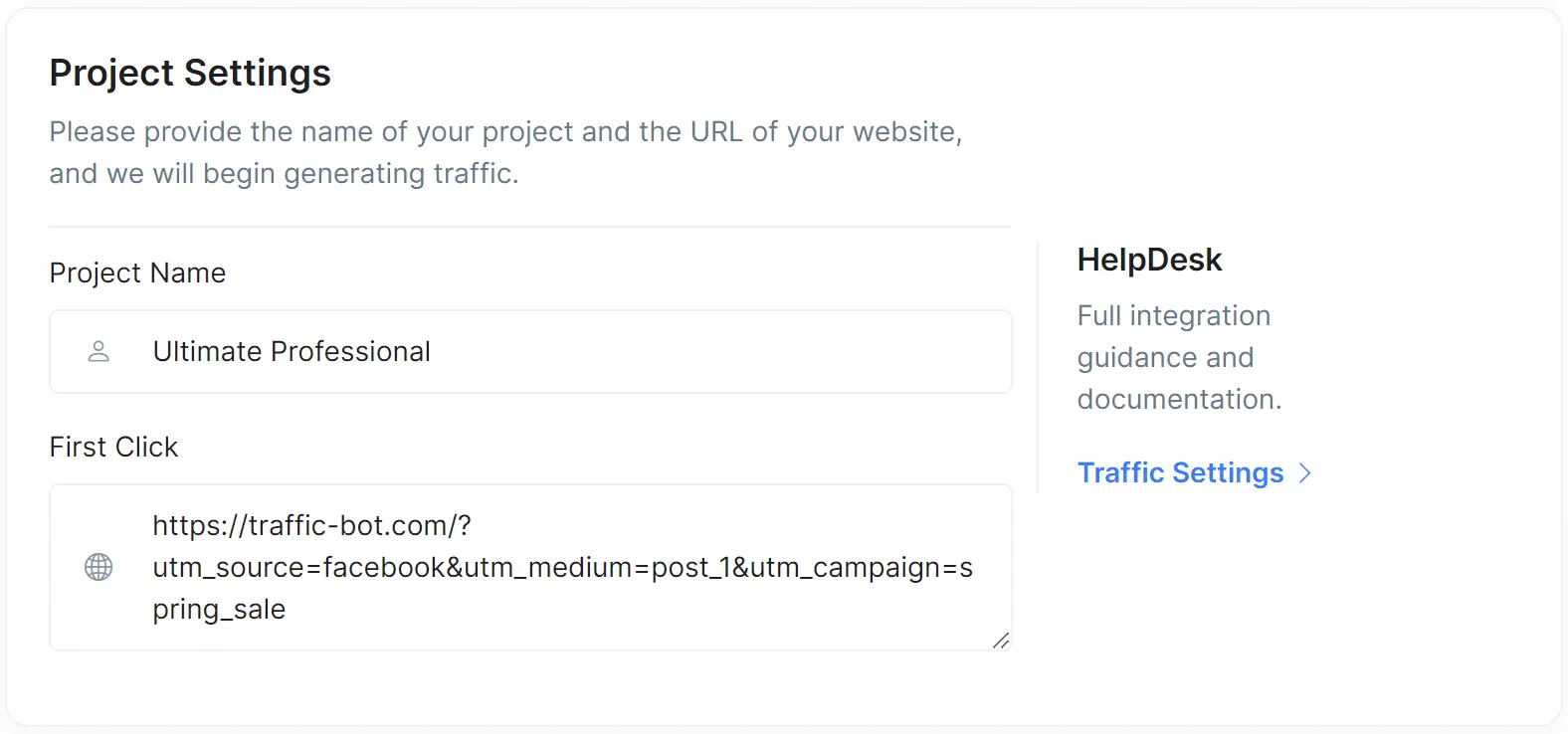Using UTMs to Separate Real Visitors from Bot Traffic
Warning: Undefined variable $author in /var/www/site2/views/blog-article-tips-tricks-utm.html on line 63
Warning: Undefined variable $date in /var/www/site2/views/blog-article-tips-tricks-utm.html on line 66
Introduction
In digital marketing, maximizing the performance and visibility of a website has become increasingly complex. Yet, some tools and strategies have proven remarkably effective. Among these are UTM parameters or Urchin Tracking Module parameters. But what are UTMs, and how do they integrate with another common practice, buying bot traffic? Let's dive in.
What are UTMs?
UTMs are simple code snippets added to the end of a URL to track the performance of campaigns and content. They were initially developed for use with Urchin, the software precursor to Google Analytics, but they have since been adopted widely in digital marketing. UTMs enable you to track where your website's traffic is coming from, which marketing campaigns are most effective, and how different audience segments interact with your site.
How do UTMs work?
UTMs add specific parameters to your URLs, creating unique links that can be tracked individually. When a user clicks on a UTM-tracked link, the parameters in the URL are sent to your analytics platform, which interprets the data and records it in your reports. This enables a deep dive into your traffic data, offering invaluable insights for marketing optimization.
What information can be tracked using UTMs?
The power of UTMs comes from their ability to track key information about your website traffic. This includes the source (where the traffic came from), the medium (the type of traffic), and the campaign (the specific promotion or strategy driving the traffic). Additional parameters can track the content (which link was clicked) and the term (the keywords used in a paid search ad).
How do I create and add UTMs to my URLs?
Creating and adding UTMs to URLs is surprisingly straightforward. Google offers a free URL builder where you can input your URL, campaign source, campaign medium, and other parameters. The tool then generates a URL with the UTM parameters included. This URL can be used in your campaigns, enabling detailed tracking of your marketing efforts.
Google's Campaign URL Builder (UTM Builder link)

Enter the Website URL: This
is the website or webpage you want to track in your campaign. For
example, if you want to track visits to your homepage, you'd enter
https://www.yourwebsite.com.
Campaign Source (utm_source):
Enter the platform (or referrer) where your traffic will come from,
like Google, Newsletter, or
Twitter.
Campaign Medium (utm_medium):
Enter the marketing medium, like CPC,
Email, Social.
Campaign Name (utm_campaign):
Enter the name of your campaign. This could be a specific product
promotion or strategic campaign like Spring_Sale,
BlackFriday, New_Product_Launch.
Campaign Term (utm_term) (Optional): You can use this field for paid search to identify the keywords for your ad.
Campaign Content (utm_content) (Optional): Used to differentiate ads or links that point to the same URL. Examples: logo link or text link.
After you've filled in all the relevant information, the Campaign URL Builder will automatically generate a campaign URL for you. This is the URL you should use in your campaigns.

Do I need technical expertise to use UTMs?
While UTMs may sound technical, they're accessible to marketers of all levels. A basic understanding of your marketing goals and the nature of your campaigns is enough to start using UTMs effectively.
How will UTMs benefit my marketing efforts?
UTMs can significantly improve your marketing analytics by providing data about your traffic. This information allows for detailed campaign analysis and aids in making informed decisions about future marketing strategies.
Can UTMs be used to track bot traffic?
Indeed, UTMs can effectively track bot traffic as well. This is particularly useful for businesses that purchase bot traffic to improve web metrics. Applying UTMs to URLs directed at bot traffic lets you monitor how these bots interact with your site and contribute to your overall traffic.

What is the impact of bot traffic on website performance metrics like bounce rates, returning visitors, and time on the page?
Purchased bot traffic can greatly influence website performance metrics. For instance, it can lower bounce rates, increase the rate of returning visitors, and augment the average time spent on your pages. This happens as the bot traffic imitates the behavior of real users, and these enhanced metrics can positively affect your site's SEO ranking.
How does bot traffic improve CTR using Google Search Console Traffic?
Services such as Google Search Console Traffic are designed to boost your pages' Click-Through-Rate (CTR). When applied to bot traffic, they can simulate real user interactions with your search listings, increasing the overall CTR. Higher CTR can signal to search engines that your page is relevant to user queries, thus improving your search engine ranking.
How can improved parameters from bot traffic boost a website's search engine ranking?
Bot traffic can significantly improve specific parameters critical to search engine ranking. Search engines like Google view these improved metrics as indications of a quality website that provides value to visitors, thereby influencing the search engine ranking favorably. Coupling this strategy with relevant content and SEO practices can increase organic traffic.
Are there any limitations or potential issues with using bot traffic?
While using bot traffic can provide numerous benefits, it's essential to understand potential limitations and pitfalls. One issue is that not all bots are created equal. Some low-quality bots can result in a spike of invalid traffic, which can trigger search engine penalties. Therefore, choosing a reputable provider ensures the bot traffic behaves like real users and complies with Google's guidelines is crucial.
→ CHECK OUR COMPARISON OF 30+ TRAFFIC BOTS
Are there any best practices for using bot traffic to enhance UTM data?
To effectively use bot traffic in tandem with UTMs, consider the following best practices:
- Ensure UTMs are correctly structured and relevant to each campaign to guarantee precise tracking.
- Regularly review your UTM reports to understand the bot traffic behavior and its impact on your metrics.
- Use UTMs to track the effectiveness of different types of bot traffic and adjust your strategies accordingly.
How can I ensure my UTM reports reflect accurate data while using good and bad bot traffic?
If you are using UTM parameters in your URLs for tracking your marketing efforts and you're worried about bot traffic skewing your data, there are a few steps you can take to ensure your reports are as accurate as possible:
- Google Analytics Filtering: You can create a filter in Google Analytics to exclude known bad bots and spiders. Google has a predefined filter for this under View settings, where you can check the box that says, 'Exclude all hits from known bots and spiders.'
- Advanced Segments: In Google Analytics, you can create an Advanced Segment to exclude traffic by ISP or network domain if you identify large amounts of harmful bot traffic from specific ISPs or domains.
- Monitor Traffic Sources: Regularly review your traffic sources. Bad bot traffic often comes from a few specific locations or may have other identifiable patterns, such as low time spent on site, high bounce rates, or large pages per session. Be wary of unusually high spikes in traffic without a corresponding increase in conversions or engagement.
- IP Exclusion: If you identify bad bot traffic coming from specific IPs, you can exclude these from your reports in Google Analytics.
- CAPTCHA Implementation: On your website, consider implementing CAPTCHAs, which can deter many simpler bots.
- Use a Bot Management Solution: You can track good bot traffic and adjust settings in Traffic-Bot.com's Dashboard.
- Validate User Agents: Consider validating user agents of incoming traffic. While this may not deter all bot traffic (as some bots pretend to be legitimate web browsers), it can help filter out some less sophisticated bots.
Conclusion
In conclusion, utilizing UTMs with purchased bot traffic can yield valuable insights into your website's performance and significantly boost your SEO efforts. The key is understanding the mechanisms of UTMs and using bot traffic responsibly and effectively. With these tools, you can take your digital marketing strategies to new heights, improving your website's visibility and success in today's competitive online marketplace.
We will continue to update traffic-bot.com; if you have any questions or suggestions, please contact us!